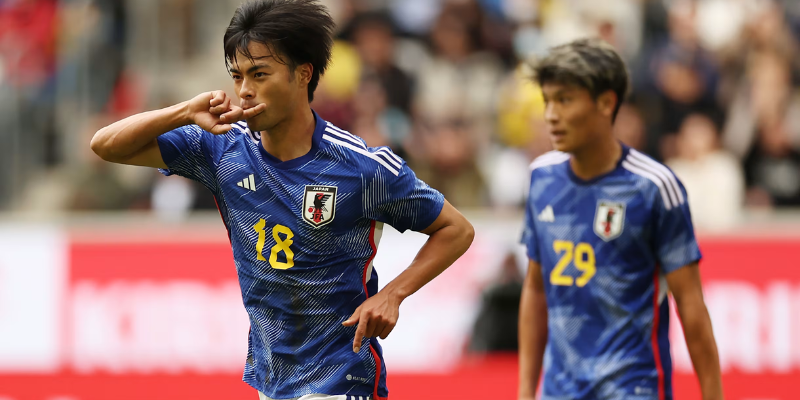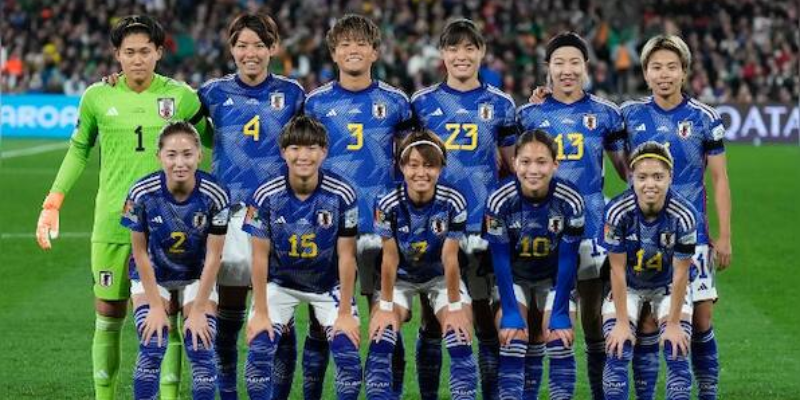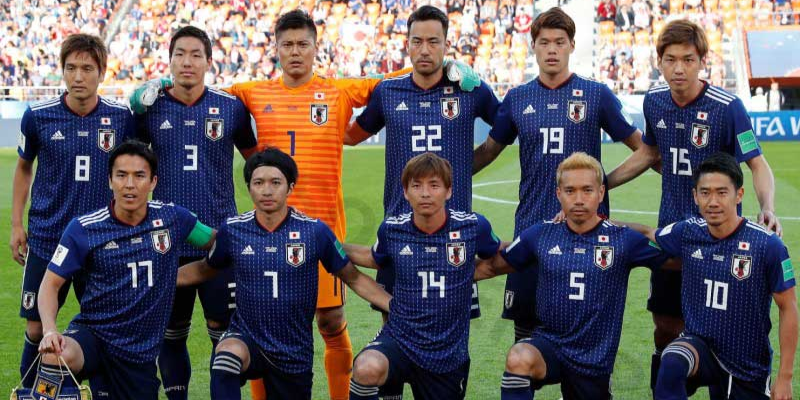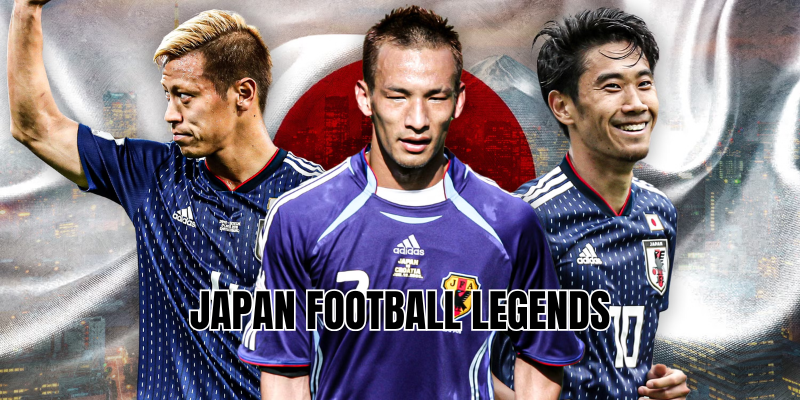In the world of football, legends are those whose names echo long after their last match. Japan football legends have not only lifted domestic fans to roar with pride, but also shaped how Asia and the globe view Japanese talent., and the enduring legacy of the greatest Japanese football legends — and why their influence still pulsates in every Samurai Blue jersey today.
Early Pioneers: The Foundation of Japanese Football

Long before Japan featured in FIFA World Cups, there were trailblazers who laid the groundwork in domestic leagues, selective international fixtures, and the Olympic stage.
Kunishige Kamamoto — The Scoring Machine
If you look up Japan’s all-time goalscorer list, the name Kunishige Kamamoto dominates with 75 goals in 76 caps for the national team. He played. His domestic record is equally fearsome: 202 goals in 251 matches for Yanmar Diesel. Kamamoto later became vice-president of the Japan Football Association and was inducted into the Japan Football Hall of Fame.
Yasuhiko Okudera — The European Trailblazer
In the 1970s, Japanese players rarely ventured abroad — except Yasuhiko Okudera, who became the first Japanese to play professionally in Europe. He featured in the Bundesliga with 1. FC Köln, Hertha BSC, and Werder Bremen, even scoring in the European Cup, making him the first Asian to do so. His pioneering journey gave Japanese players the confidence to aspire overseas. edia])
These two figures frozen the path for future generations —.
The Golden Age: Stars Who Elevated Japan on the World Stage

As the J.League professionalized in the 1990s and the national team qualified for its first World Cups, a new generation of stars carried Japanese football into the modern era.
Hidetoshi Nakata — The Global Ambassador
Among Japan football legends, Hidetoshi Nakata is often seen as the bridge between East and West. He became the first player from the Asian Football Confederation to be nominated for the Ballon d’Or, playing for clubs such as AS Roma (winning Serie A in 2001), Parma, Fiorentina, and Perugia.
He wasn’t just a midfielder: Nakata’s off-pitch persona — fashion, media, ambassadorial roles — made him a symbol of Japanese soft power. He retired early (age 29) to pursue other passions.
Shunsuke Nakamura — Master of the Free Kick
Among set-piece specialists worldwide, Shunsuke Nakamura is often hailed as Japan’s finest. Over a career spanning more than two decades, he notched 98 caps and 24 goals for Japan, and played club football with Celtic (where his curling free kicks became legend), Espanyol, and multiple spells in the J.League. He won J.League MVP twice (2000, 2013).
His left foot could turn defense into offense; his legacy is in every Japan free kick that swings on a breeze.
Kazuyoshi Miura — The Eternal King
Yes, he still plays professionally in his 50s, and that fact alone should earn a statue. Kazuyoshi “King Kazu” Miura first played for Japan in 1990 and collected 89 caps with 55 goals. Domestic fans saw him score prolifically for Verdy Kawasaki, and abroad he tried his hand in Italy, Croatia, and various leagues. At age 58, he’s preparing for his 40th season in professional football, making him possibly the world’s longest-running pro.
He holds records for oldest goalscorer and has shown that in passion and longevity, age is but a number.
Modern Legends: Bridging Past and Present

The 2000s onward gave birth to players who not only embraced the footsteps of giants but also carved new paths — into Europe’s top leagues, World Cup stages, and national captaincies.
Shinji Kagawa — The Dortmund Dynamo
Rising through Cerezo Osaka’s youth, Shinji Kagawa became one of the first Japanese players to star in Europe’s elite. With Borussia Dortmund, he won back-to-back Bundesliga titles and helped the team reach a Champions League final role. He also had a stint at Manchester United. Internationally, he earned wide acclaim and remains one of Japan’s all-time favorites.
Keisuke Honda —, leader — Keisuke Honda had success in Japan and abroad (CSKA Moscow, AC Milan). In three World Cups, he scored crucial goals and became a face of Japanese football globally. He also played key roles in qualification campaigns and continental tournaments.
Makoto Hasebe — The Calm Captain
In a position where quiet leadership matters, Makoto Hasebe became synonymous with tactical intelligence. He captained Japan, played many years in the Bundesliga (Wolfsburg, Eintracht Frankfurt), and won the Europa League in 2022. His longevity and consistency make him part of the Japan football legends narrative.
Yasuhito Endo — The Enduring Maestro
No Japanese footballer has made more national team appearances than Yasuhito Endo. With 152 caps spanning 2002 to 2015, he anchored midfield, molded younger players, and was Japan’s midfield brain for more than a decade. Domestically, he played more than 600 matches, mostly for Gamba Osaka.
Yuto Nagatomo — The Versatile Full-back
Often overshadowed by more attacking names, Yuto Nagatomo deserves mention. He collected over 140 caps, played in four World Cups, and spent many seasons abroad. His tireless runs on the wings and defensive solidity made him a fixture in national squads.
How These Legends Shaped Japan’s Football Identity
1. Opening Doors to Europe
From Okudera to Nakata to Kagawa and Honda — these players broke barriers, making Europe a viable destination for Japanese talent. They proved that domestic success could translate internationally, inspiring younger generations to aim higher.
2. Versatility, Discipline, and Technical Intelligence
Japan does not rely on raw power alone; these legends often displayed supreme positional awareness, technical touch, work ethic, and tactical adaptability. Whether in midfield or defense, they could shift roles seamlessly.
3. Cultural Ambassadors
Many of these legends became cultural icons—not just footballers. Nakata moved into fashion, media, and even sake entrepreneurship. Their public personas increased Japan’s visibility on the global stage, beyond just sports.
4. Setting Records That Still Matteroals, caps, longevity — they wrote records that younger players now chase. Kazu still plays, Nakata’s Ballon d’Or nominations remain benchmarks, Endo’s cap record stands. These are not relics; they are living targets for new stars.
5. Fostering Continuity
Through mentorship, coaching, and ambassadorial roles, many legends continue to influence Japanese football. Their names are in youth coaching, federation leadership, and domestic clubs’ advisory roles.
Top 10 Japan Football Legends (Summary List)
Here’s a quick-look list of ten legends whose impact still reverberates:
| Name | Position | Notable Achievements |
| Kunishige Kamamoto | Forward | 75 goals in 76 caps; Olympic bronze 1968 |
| Yasuhiko Okudera | Midfielder | First Japanese to play in European leagues |
| Hidetoshi Nakata | Midfielder | Serie A champion, Ballon d’Or nominee |
| Shunsuke Nakamura | Attacking Midfielder | Free-kick specialist, J.League MVP twice |
| Kazuyoshi Miura | Forward | Over 50 international goals; active into 50s |
| Shinji Kagawa | Attacking Midfielder | Bundesliga titles, European acclaim |
| Keisuke Honda | Midfielder / Forward | Impact across club & international, 3 World Cups |
| Makoto Hasebe | Defensive Midfielder | Captain, Europa League winner |
| Yasuhito Endo | Midfielder | 152 caps, midfield stalwart |
| Yuto Nagatomo | Full-back | 4 World Cups, long international service |
This list is not exhaustive; many others like Junichi Inamoto, Atsuto Uchida, Yuji Nakazawa, and more deserve honorable mention. But these ten stand at the core of Japan football legends.
Challenges and Legacy: What Lies Ahead for Japan
Japan’s national team has matured: regular World Cup knockout appearances, domestic league expansion, and more players in Europe. Yet demands have shifted. Fans expect not just participation, but serious contention at the highest level.
The mantle now lies with players such as Takefusa Kubo, Kaoru Mitoma, and Ritsu Doan. Their success will be measured not only against current opposition but against the names listed above.
The legends set high bars in professionalism, mentality, and representation. If newer generations carry those same virtues — plus a bit more ambition and luck — the future can be even brighter.
Final Thoughts
Japan football legends are more than names in a record book — they are beacons for what Japanese football aspires to be: technically adept, globally competitive, and proudly Japanese. From Kamamoto’s scoring feats, Okudera’s European proof, Nakata’s continental charisma, to Kagawa’s tactical brilliance and Miura’s unending flame — their legacies shine in every pass, goal, and national team dream.
If you enjoyed this journey through Japan’s greatest, GypsyGoal invites you to explore deeper — read player biographies, compare records, and follow new stars rising. Let this article be your gateway — come back to GypsyGoal for match reviews, stats, and the next chapter in the story of Japanese football greatness.



